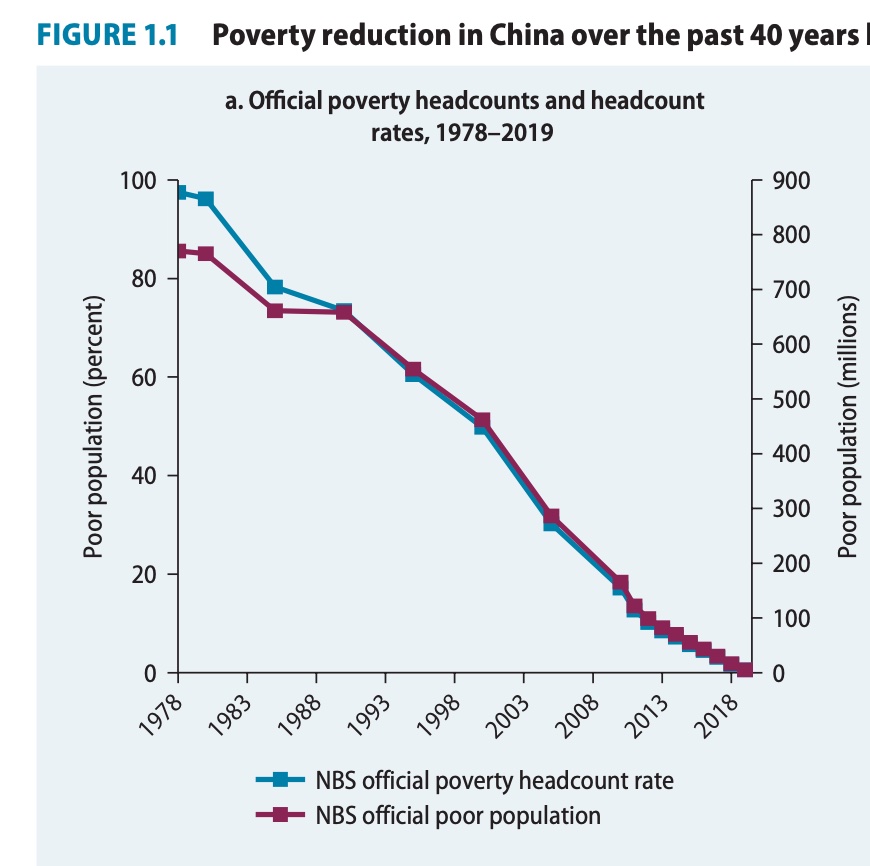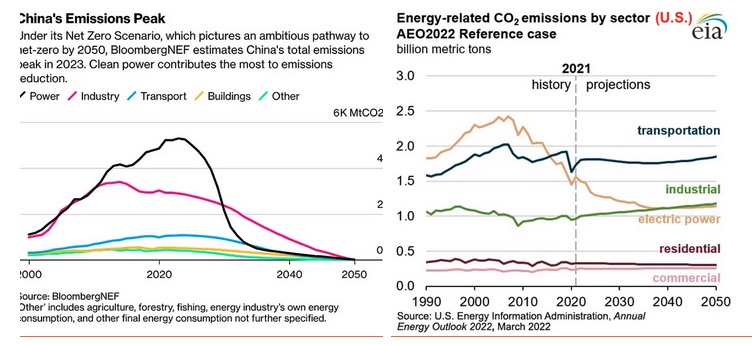This summer, we are seeing that the long-forecast crisis of global warming is truly upon us, and last week U.S. “climate czar” John Kerry visited Beijing to (in the words of some high-ranking U.S. officials) “urge his Chinese hosts to do more” to rein in CO2 emissions. Just World Ed’s President Helena Cobban took the opportunity to dig into some of the wealth of data that exists regarding the responsibility of China and the United States for CO2 emissions, historically and currently, as well as other indicators of the plans these two very large countries have for helping to address the global climate crisis.
Ms. Cobban wrote up her findings in two essays she published last week on the Globalities platform (which is a project of Just World Ed.) In the first of these, “John Kerry, China, and averting planetary disaster”, she presented some powerful data about the plans the two countries have for curbing (or not) their own CO2 emissions between now and 2050 (see above.)
She also presented:
- other powerful graphics and figures that highlight China’s already-strong record on installing large-scale solar and wind-power generating facilities,
- a comparison between that record and those of the United States and some other countries;
- a reminder that though China’s over-all level of CO2 emissions is currently double that of the United States, still, on a per-capita basis, it is only half that of Americans; and
- an intriguing chart portraying the historical responsibility of various countries for the levels of greenhouse gases the climate is still suffering from today.
We urge you to go to that essay to see those very persuasive charts and figures!
On Monday, Ms. Cobban also gave a verbal description of the most important aspects of her research in a 29-minute podcast interview she gave to veteran peace activist David Swanson. You can listen to his podcast here, or see the audiovisual version of it on YouTube, here.
The second of the essays Ms. Cobban published last week was titled “Climate crisis puts Ukraine war into perspective.” In it, she argued that, “From a global point of view, the conflict in Ukraine is yet another localized tiff between different factions in that tiny (< 12%) portion of humanity that is of European heritage.” She noted that because European powers no longer command sprawling global empires, this “tiff” has far less impact than the two (also mainly intra-European) “World Wars” of the 20th century. The climate crisis, by contrast, is truly global and indeed imposes its greatest costs on the peoples of the Global South.

In that essay, she also dove deeper into China’s past record and existing regarding CO2 emissions. Her starting point was the Chinese government’s well-attested achievement of having lifted 800 million of its people out of poverty in the four decades between 1978 and 2018.
As a key 2022 report (PDF) from the World Bank had noted, effective central government planning including in the construction of physical infrastructure had played a key role in meeting that inspiring goal. So in the second half of this essay, Ms. Cobban explored transportation statistics in both the United States and China, highlighting the contrast between China’s extensive and ongoing investment in high-speed rail and the United States’ sad continuing reliance on emissions-spewing cars and airplanes for the vast majority of its inter-city transportation.

